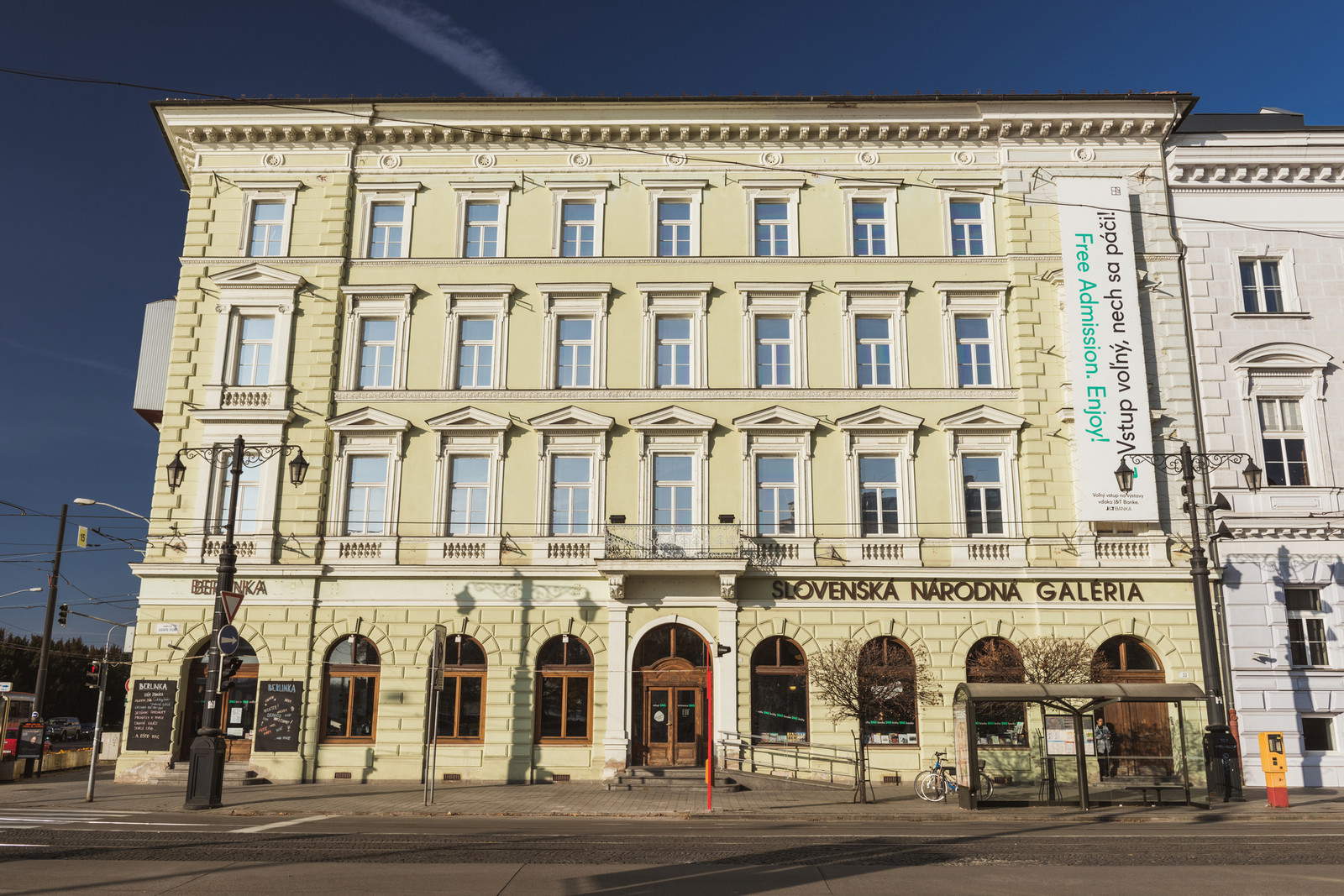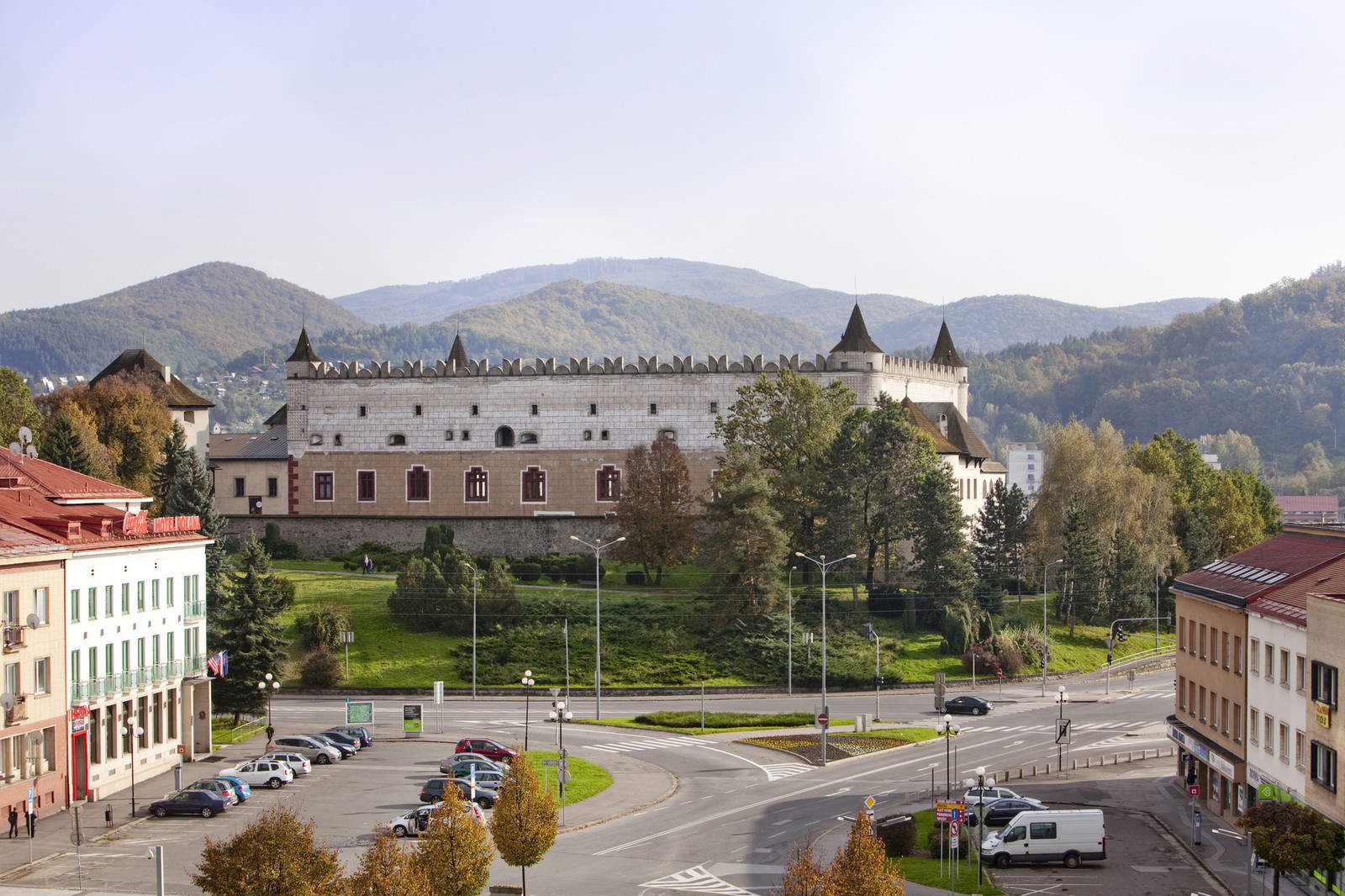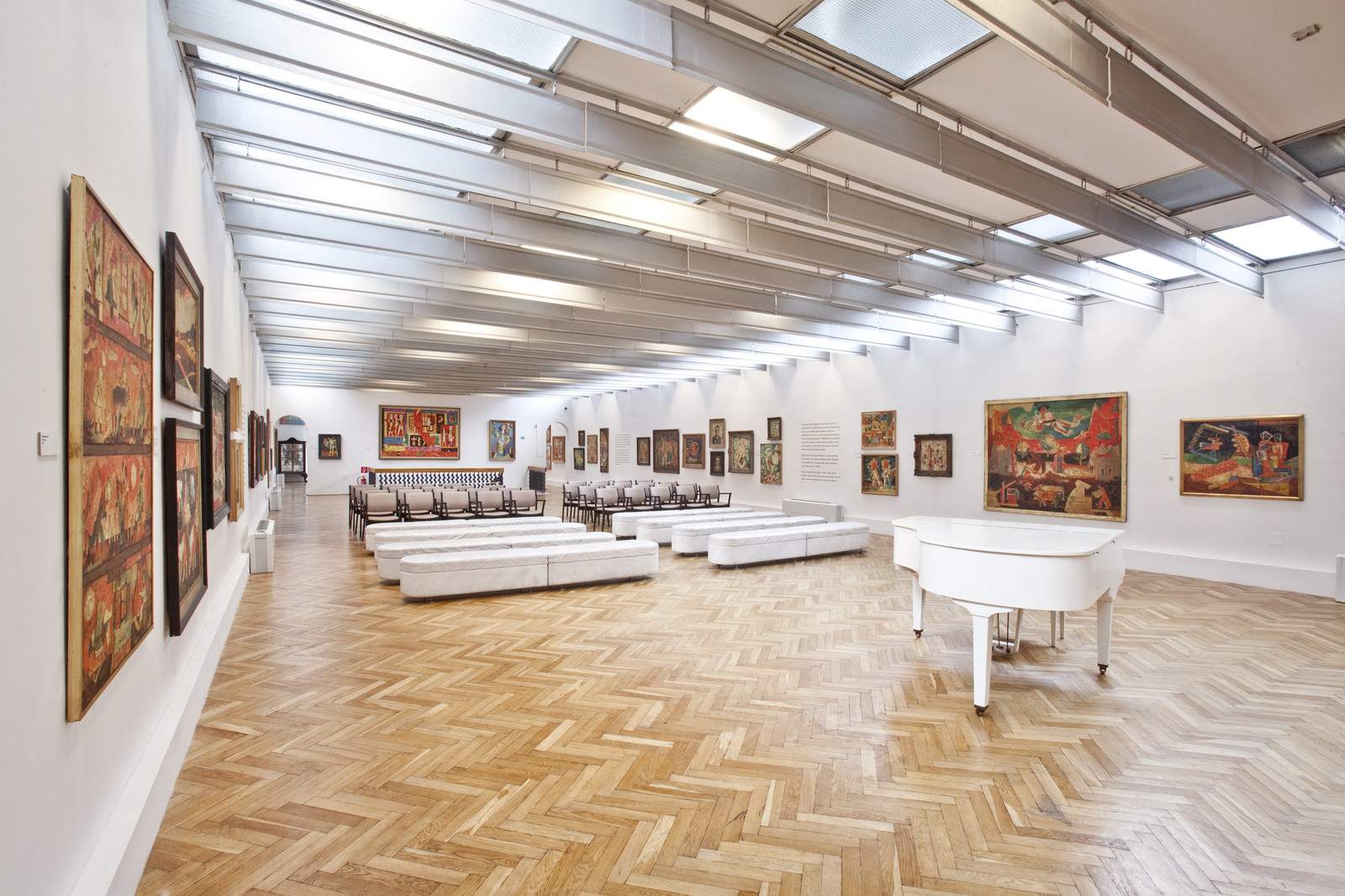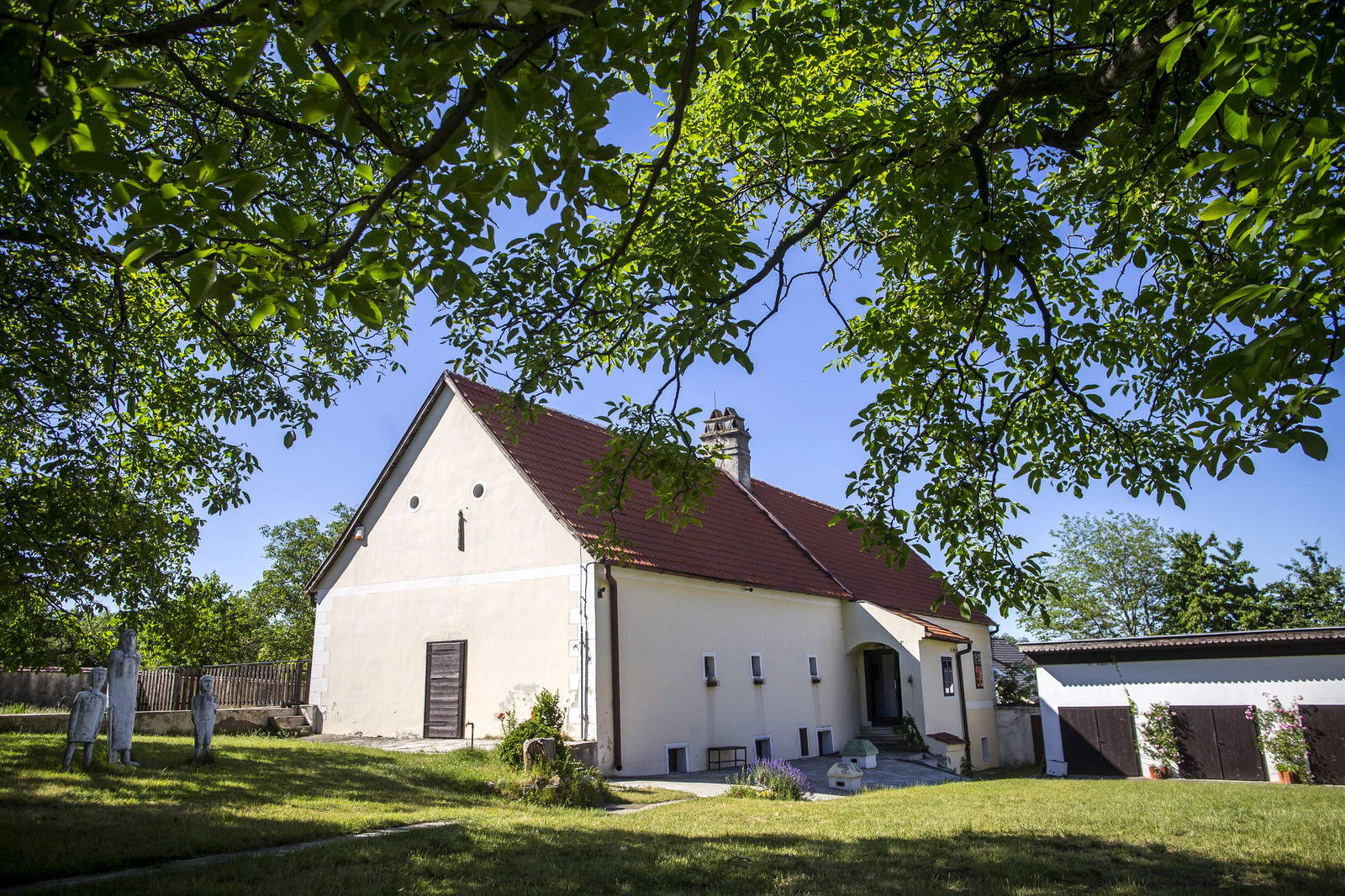A relatively young museum, but one with an already rich history: this is the Slovenská Národná Galéria, the Slovak National Gallery, the country’s most important museum (also young since it became independent in 1993), which has five locations: the Esterházy Palace in Bratislava, Zvolen Castle, the Strážky mansion, the Ludovít Fulla Gallery in Ružomberok, and the Schaubmar Mill in Pezinok. They are all parts of a single entity, officially founded on July 29, 1948, by the Council of Slovakia, when the country was still part of Czechoslovakia. “Relatively recent for Europe, but a result of Slovak ambitions after the war,” says the museum. From its beginnings, the gallery set itself the goal of extensively documenting the artistic culture of the 20th century: and this is still the main focus of the Slovenská Národná Galéria, which today has a collection of more than 70,000 objects, covering both traditional arts (such as painting and sculpture) and more recent forms of expression, from design and photography to stage design and new media.
The Gallery’s activities began in full swing in 1950, when the first nucleus of the museum was established: a few rooms displaying about 500 objects, housed in a 17th-century building along the banks of the Danube, the “Vodných kasární” (“Water Barracks”), which had previously been used for military purposes. The structure was repurposed to the design of architects Florians and Rozmány, and on May 9, 1955, the gallery doors opened to the public for the first time. After a short time, however, the Gallery’s top management realized that the space was no longer adequate to hold the growing collections: so, in 1963, the Association of Slovak Architects was commissioned to design a new facility in Bratislava: the new building, the Gallery’s second home, opened on March 1, 1977. It was a great achievement for Slovakia, because the new National Gallery building was the first modern building designed in the country for purely cultural purposes, and it is still the largest museum venue in Slovakia. In the same year, the applied arts collection housed in Zvolen Castle also opened its doors.
Then, in 1986, the architecture collection, one of the most unique of its kind, was opened, and in 1991 a major renovation project of the Vodných kasární was launched, which lasted until 1994. In 1997, Strážky Castle opened its doors to the public as another venue for the Gallery, with an exhibition of 20th-century Slovak sculpture, while in November of the same year the Schaubmar Mill also opened. This brought us to the early 2000s, during which it was decided to renovate Esterházy Palace, which in the meantime had become an additional home of the Slovenská Národná Galéria: the 19th-century palace of Hungarian nobles is now the main venue for temporary exhibitions, but it also houses part of the permanent collections.
 |
| The Vodných kasární. SNG photo |
 |
| Esterházy Palace. SNG photo. |
 |
| Zvolen Castle. Photo SNG |
 |
| The villa of Strážky. SNG Photo. |
 |
| The Ludovít Fulla gallery in Ružomberok |
 |
| The Schaubmar mill in Pezinok. |
The collections focus mainly on modern and contemporary art, but there is no shortage of interesting old paintings. The two main nuclei are those of modern and contemporary paintings and graphics. These are two collections that were started immediately after the founding act of the museum through transfers from state institutions and with purchases from artists and private individuals, thanks mainly to the work of the two curators Karol Vaculík and ?udmila Peterajová who, between the 1950s and 1960s, enriched the collection of the Slovenská Národná Galéria by trying to document the development of the arts in the country as best they could. An acquisition effort that continues to this day. The painting collection numbers about 5,000 paintings, while the section on graphic art has 20,000 works including prints and drawings (mainly by Slovak artists, but there is no shortage of a sizeable international section with Japanese prints and works by artists such as Pablo Picasso, Emil Nolde, Max Klinger, Oskar Kokoschka, Fernand Léger, and many others). The sculpture collection is another of the flagships of the Slovenská Národná Galéria, with major Slovak authors all represented (the collections section on the official website, for each core collection, indicates the main acquisitions).
Another peculiar specificity of the Slovenská Národná Galéria is its collection of naïve art: this was a particularly fashionable strand in Europe in the 1950s, a period when the institute also wanted to initiate a documentation operation on the art forms of outsider artists, which has not waned over time and today houses some 2,000 works by Slovak and international artists. Among the masterpieces in the antique section, which originated from a transfer of works from the Historical Museum of Slovakia between 1950 and 1953, are also several works by Italian masters, from Giulio Cesare Procaccini to Cecco del Caravaggio, from Francesco Vanni to Pietro Liberi, from Bonifacio de’ Pitati to Antonio Balestra. Non-Italian artists include Simon Vouet, Hans von Aachen, and Franz Xaver Messerschmidt. Also very interesting is the collection of Slovak Gothic art, with about 200 pieces from churches in the area: it is the largest collection of medieval art in the country. Also significant are the collections of ceramics, glassware and jewelry, and especially the architecture collection, one of the main nuclei of the Slovenská Národná Galéria’s collection: it is the most recent (it was founded in 1986, with the first purchase of works) and aims to investigate the evolution of architecture in the nineteenth and twentieth centuries. There are drawings, plans, and studies documenting the stages of work on many of the country’s most important buildings.
Finally, the museum’s vocation for research is evidenced not only by the fact that the collections continue to be enriched, but also by the presence of a Specialized Library, founded in 1949 and specializing mainly in publications on art and museums, which is constantly being enriched, and by a specialized archive on artists and architects, which contains inventories, texts, photographs, and material with which it has been possible to reconstruct the activities of many Slovak artists. A museum in which the entire history of Slovakia’s art is thus encapsulated.
 |
| The Slovenská Národná Galéria: a museum on several locations to tell the story of all Slovak art |
Warning: the translation into English of the original Italian article was created using automatic tools. We undertake to review all articles, but we do not guarantee the total absence of inaccuracies in the translation due to the program. You can find the original by clicking on the ITA button. If you find any mistake,please contact us.